True, you might need Grandpa's Goody Getter to crack the husks, but wild walnuts are easy to find and full of great flavor
If you want to get a conversation started with JJ Reich, Senior Communications Manager for major ammunition brands that include Federal, HEVI-Shot, CCI and Speer, you can always ask him about the latest innovations in hunting cartridges, bullets, or components. Or you could ask him about his other passion that is totally unrelated to his work with ammo: Reich is crazy about foraging for native black walnuts. Just mentioning them can really get him fired up about this topic.
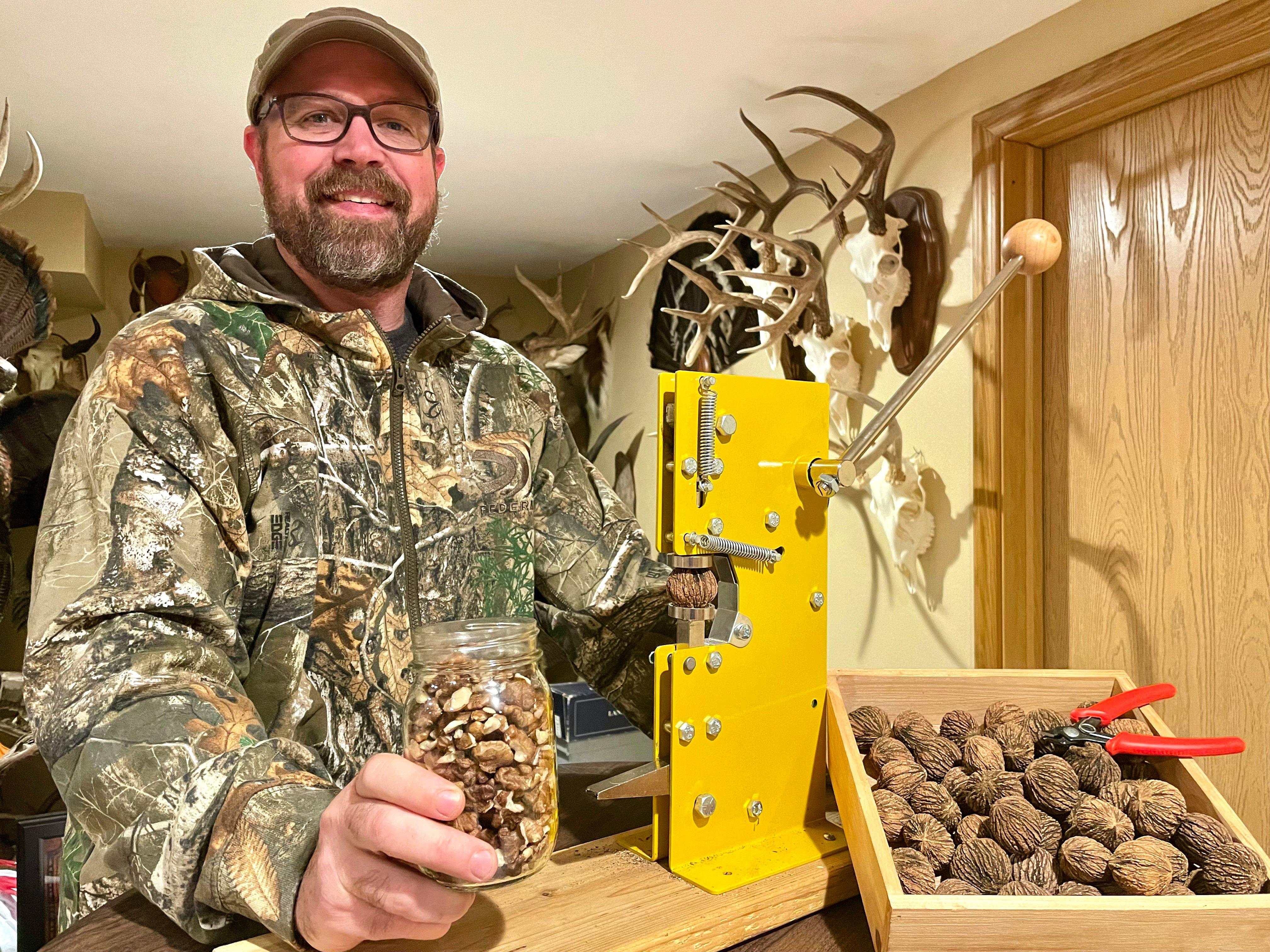
JJ Reich is obsessed with black walnuts.
In fact, he’s so into black walnuts that he has assumed it as his identity on Instagram, where he goes by @Blackwalnutdaddy. Why so interested? It all started on his wife’s family farm, where his in-laws started planting trees back in the ’70s. Black walnuts were of particular interest for lumber and, eventually, over a thousand of the trees were scattered across the landscape.
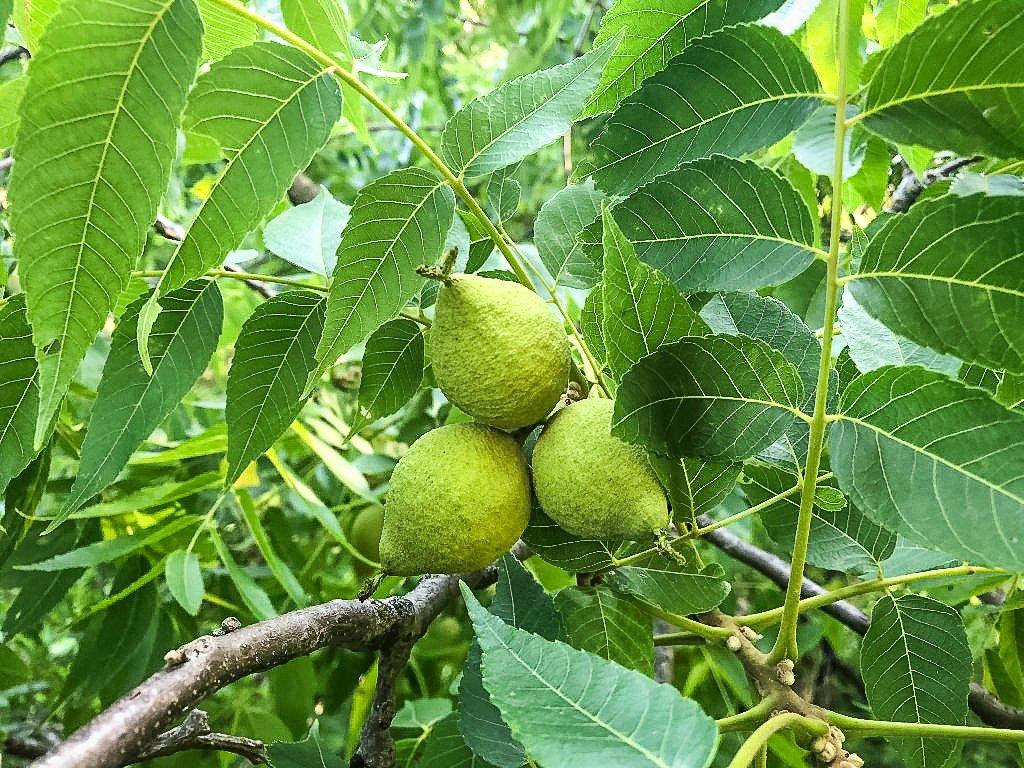
Black walnuts are native and can be found over most of the United States.
Over the next decades, the trees grew wild, without pruning or care. When JJ came onto the scene, he became interested in the walnuts he would see on the ground as he wandered the farm or hunted the area. He started picking up the occasional nut, cracking it, and enjoying the meat inside. He marveled at the flavor compared to standard imported English walnuts he had tried from the grocery. He also found that some trees just produced better tasting nuts than others, even from year to year. He started collecting the walnuts, taking them home, drying and cracking the nuts as a tasty snack.
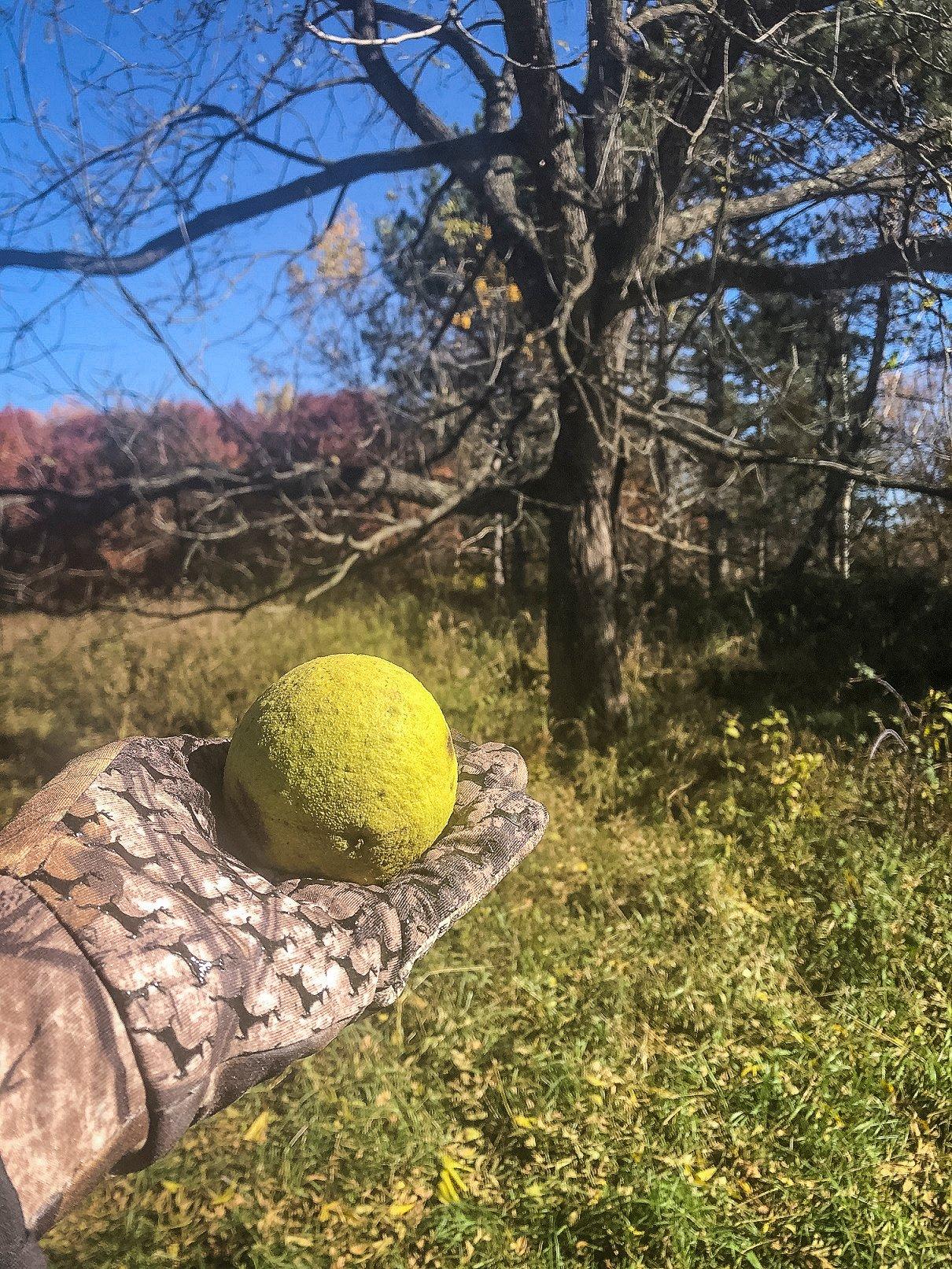
Reich took notice of the many black walnut trees on his wife’s family farm and began to collect and eat a few.
Over the years, he has developed a system for collecting and harvesting the nuts. He starts in the early fall. About mid-September, he starts to look for fallen nuts. The surface should be mostly green. “The husk starts to turn black after it falls; green husks mean fresher nuts, and they are usually better quality and easier to crack,” Reich said. “You can certainly harvest black walnuts in the later season when they are soft and black. Some say they aren’t as flavorful as fresh early season ones, but I don’t think so. They are still very good. They are just a lot messier and harder to clean. I certainly prefer green/yellow early-season nuts, but there is no need to pass up the black, late-season nuts.”
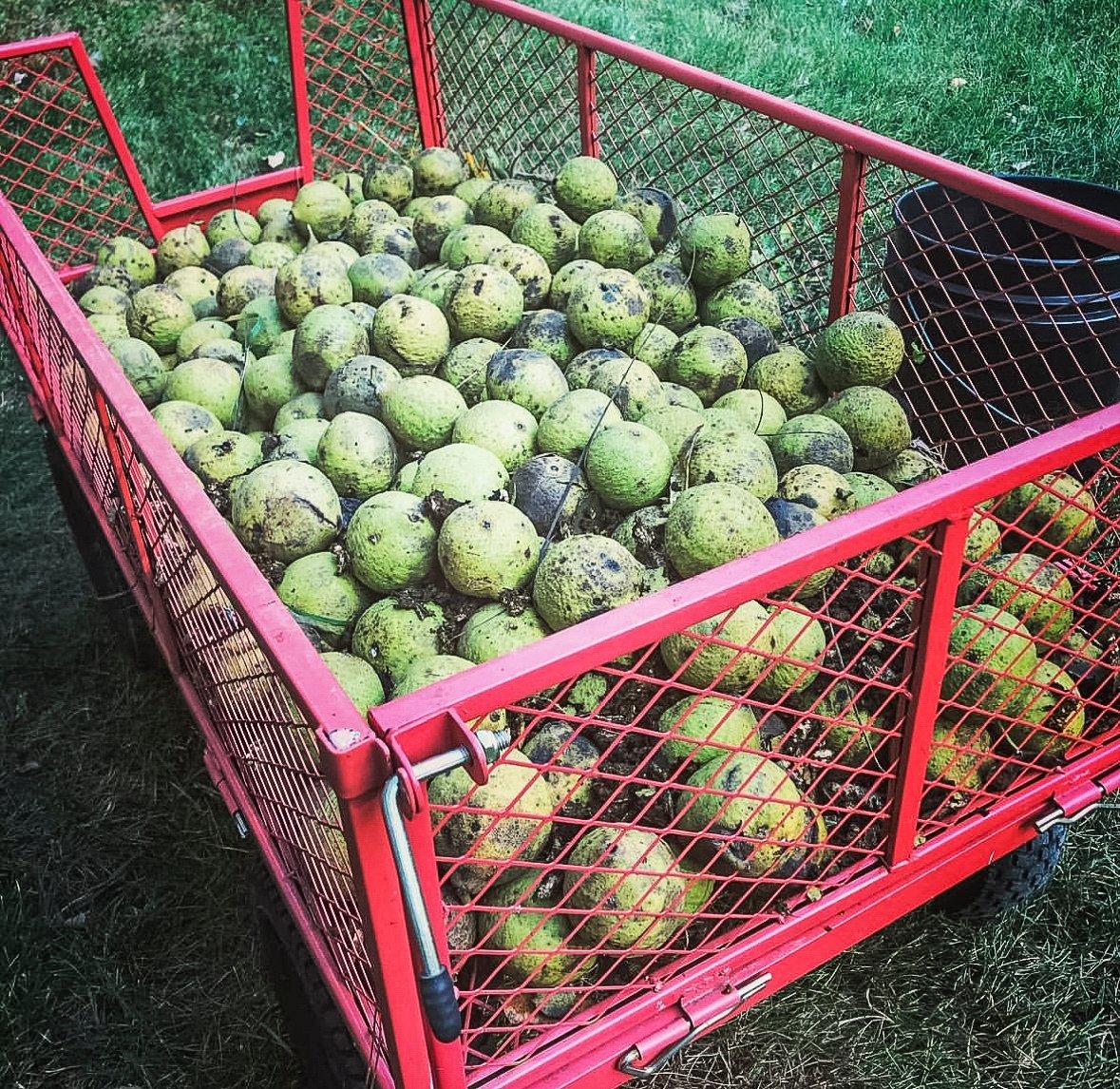
Reich prefers to collect walnuts while the hull is still green or yellow for less mess.
He picks up the nuts by hand or uses a spring roller designed for the purpose.
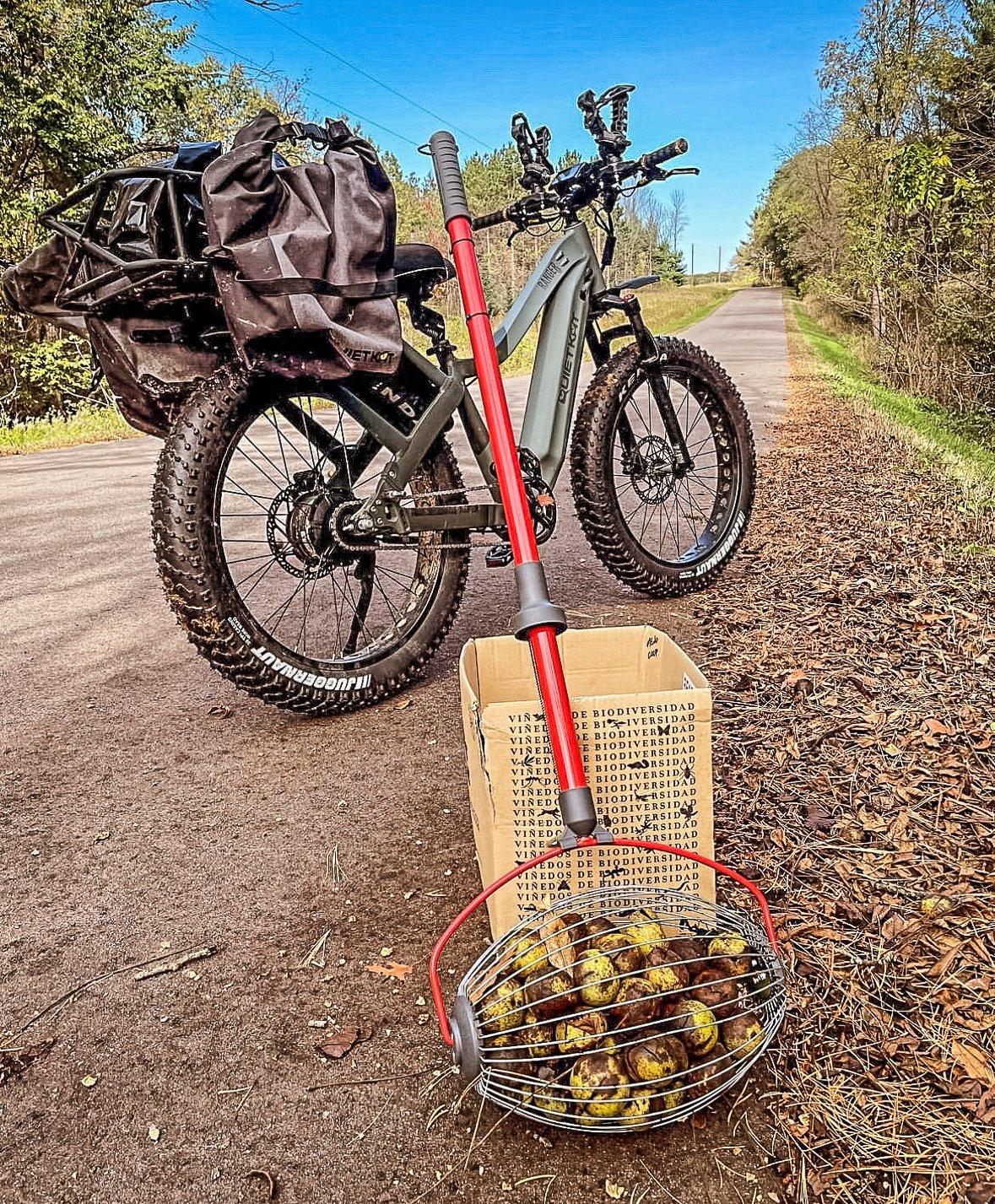
Reich collects the nuts by hand or with a roller designed for the task.
Once he has the nuts picked up, the next step is to remove the green husk or hull. You can crack the husk by stomping them or by squeezing them using a pair of boards. Reich built a system with two boards hinged together to crush the hulls. Once the husks are broken, you can peel the fibrous coating off by hand.
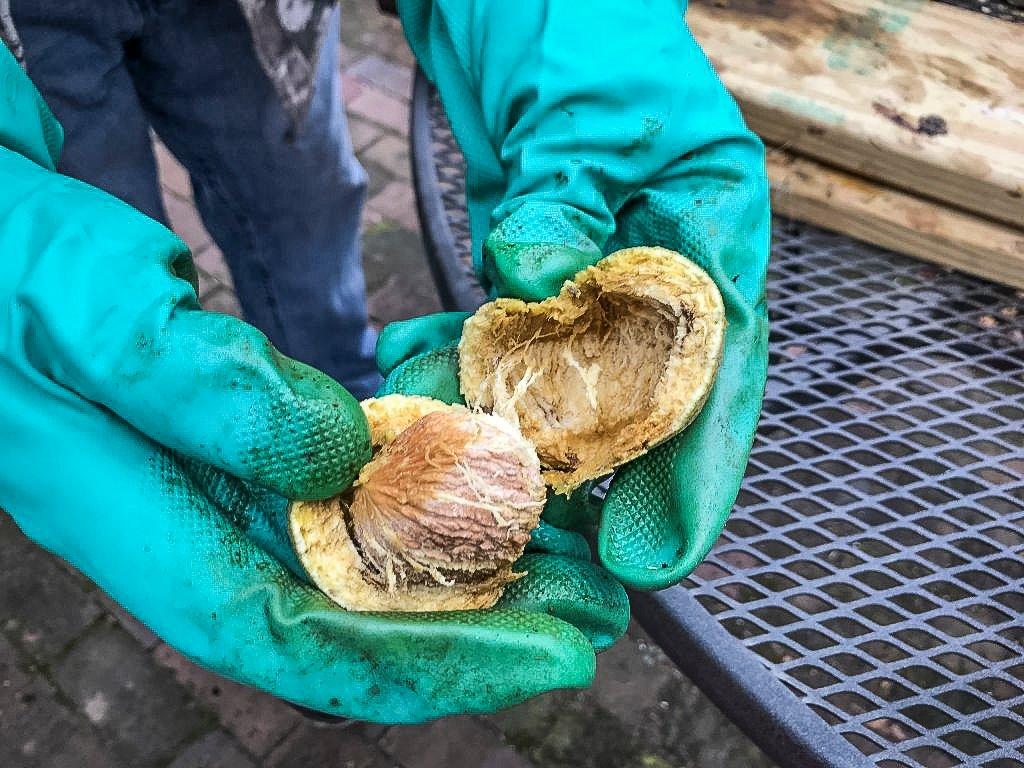
Remove the green husk from the nut.
What’s left is a dry, dark-colored shell. The heart of the nut, the meat, rests inside this shell. To get it out, Reich starts by placing the freshly husked nut into a five gallon bucket. Once the bucket reaches about a third of the way full, he adds enough clean water to fully submerge the nuts but not overfill the bucket. “I want enough water for smooth stirring, but not too much or the scrubbing action won’t be effective,” Reich said. Most of the nuts will remain on the bottom of the bucket, but a few will float to the top. The floaters are usually hollow or rotten inside. Toss those in the trash.
The remaining nuts now need to be cleaned. Reich says the easiest way he has found to do this is with a drill and a drywall mud mixer or long bucket brush. Stick the mixer into the bucket, hit the drill, and really give everything a good scrub. “I stir for a minute and sometimes more depending on how much husk was on them. You could also stir by hand with a stirring tool, but that is more time consuming,” Reich said.
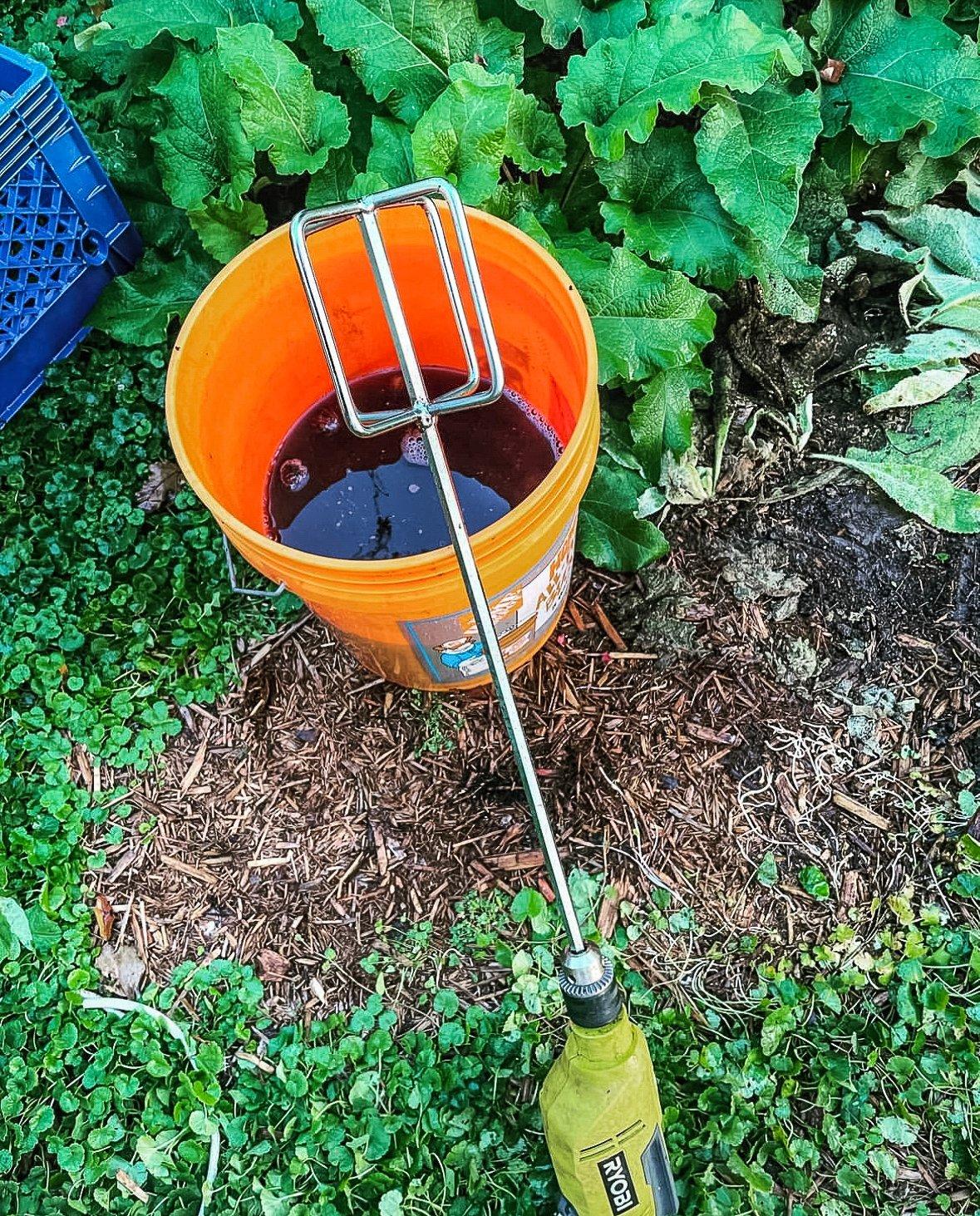
A power drill and a drywall mud mixer make an effective cleaner.
Once the nuts have been cleaned, he drains and rinses them to remove any loose husk debris, then repeats the process. Once the nuts have been washed in this manner — often a few times, until they look very clean — the soaking-wet nuts then need to be dried until no wet spots are visible. “I typically let the nuts air-dry in the sun for a few hours or with help from an electric fan. If a nut doesn’t dry and still looks wet, its shell is likely damaged and it is bad. Throw it out.”
Next comes the curing time, which means the nut meats need time to age and condense in flavor. Reich has found mesh bags or narrow wire cages to be the most effective containers for this. “Nuts need air to cure. When curing, nuts can’t be stacked too thick or deep, or they won’t cure properly. I hang the bags of nuts in a dry, cool place. I let nuts cure for 4 to 6 weeks. I then store them in large paper grocery bags after they are fully cured and completely dried out. Or they can be stored in loosely covered storage containers. Cured nuts, or nut meats, can also be frozen and thawed multiple times with little or no negative effects.”
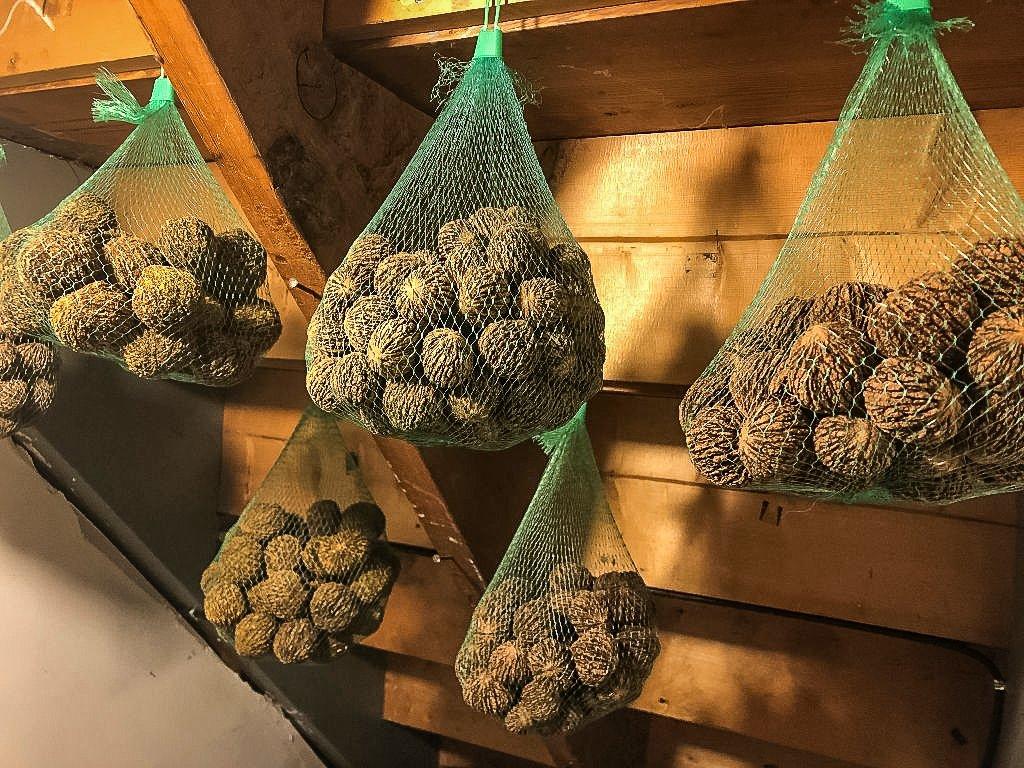
Mesh bags or wire cages allow adequate air flow while curing the nuts.
Once the nuts have been cured, they are ready to crack and eat. Black walnut shells are notoriously tough; it’s one of the reasons they aren’t as popular commercially as their imported cousins or other nut varieties.
Cracking black walnuts can be as simple as using a hammer and hard surface if you are only doing a few, but if you plan to crack a lot of nuts, Reich suggests investing in a good black walnut cracker. “Years ago, I gathered a bucketful of these tough nuts on our family farm. Although the process of collecting, husking, washing, and curing black walnuts is time-consuming, laborious, wet, and messy, I found the work and the rewards deeply satisfying. That said, I also realized this nut’s resilient reputation is rightfully deserved. A black walnut shell is truly built like a tank. Cracking it open was my biggest obstacle.
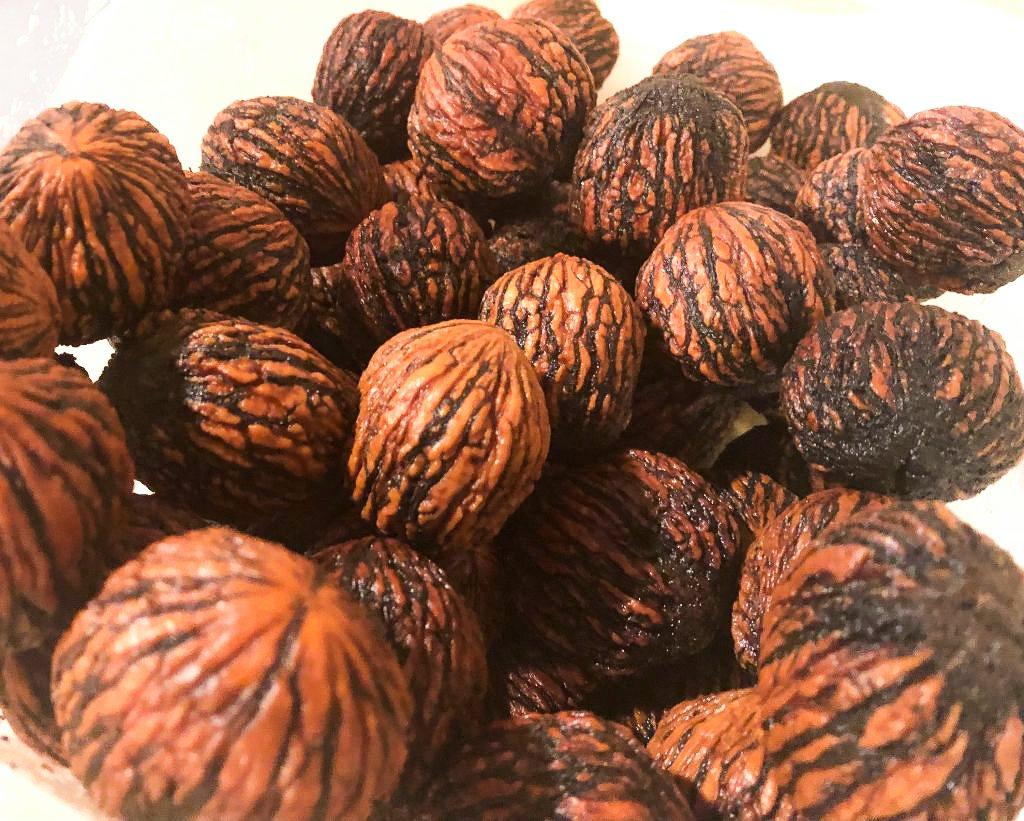
Black walnut shells are extremely tough and difficult to crack.
“Online advice recommended ‘lightly’ tapping the nut with a hammer,” he said. “Although that suggestion sounded ridiculous, I tried it. After pulverizing a dozen nuts using this rudimentary method, I felt defeated. I then searched the universe for a nutcracker that is heavy-duty enough to precisely break these little, brown, edible tanks.
***Don’t Miss: *REALTREE’S 2023 CAMO CHRISTMAS GIFT GUIDE
“My solution came from a website run by a father and son in Lake Ozark, Missouri. I was in love from the moment I read its name: “Grandpa’s Goody Getter.” I was mesmerized by its gold paint job, and its long-levered handle begged me to pull it. Clearly, this wasn’t a simple kitchen utensil. Instead, it was a seriously complex machine — constructed of steel sheet metal, strong springs, slide bars, greased cams, cutting rams, cotter pins, jam nuts, and other hardware — all meticulously designed to deliver black-walnut-cracking perfection,” Reich said.
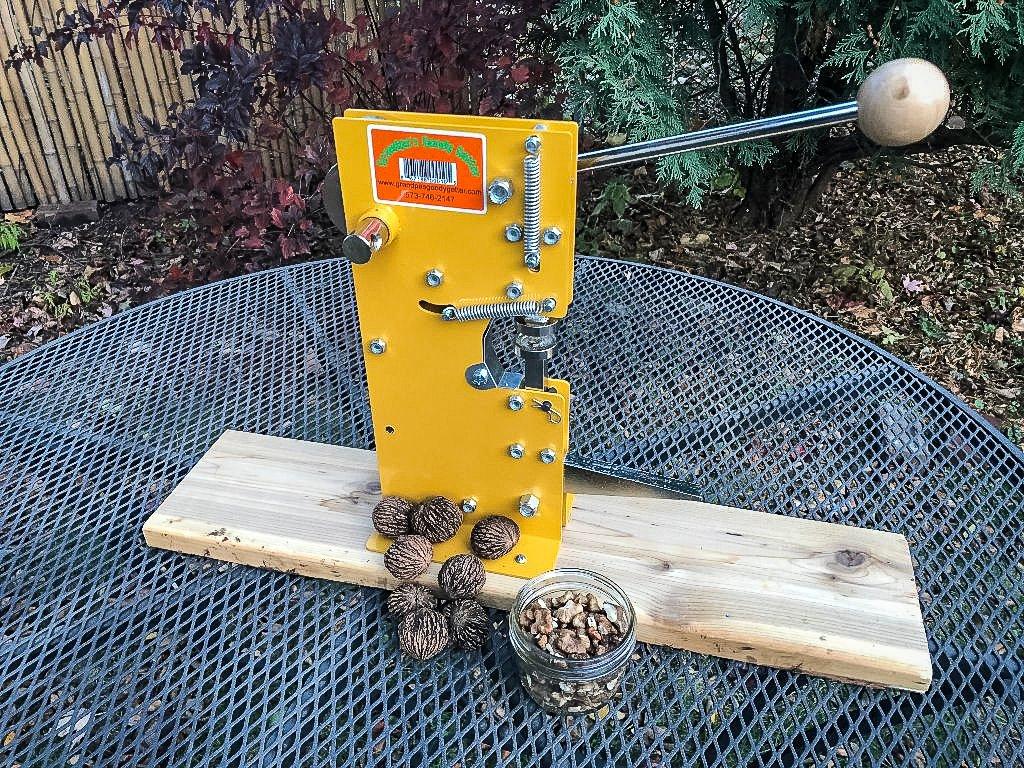
Reich prefers Grandpa’s Goody Getter nut crackers for extracting the nut meat from the hull.
Grandpa’s Goody Getter isn’t the only nut cracker on the market. Over the years, Reich has tried them all but he always comes back to his GGG machine. He says it just works.
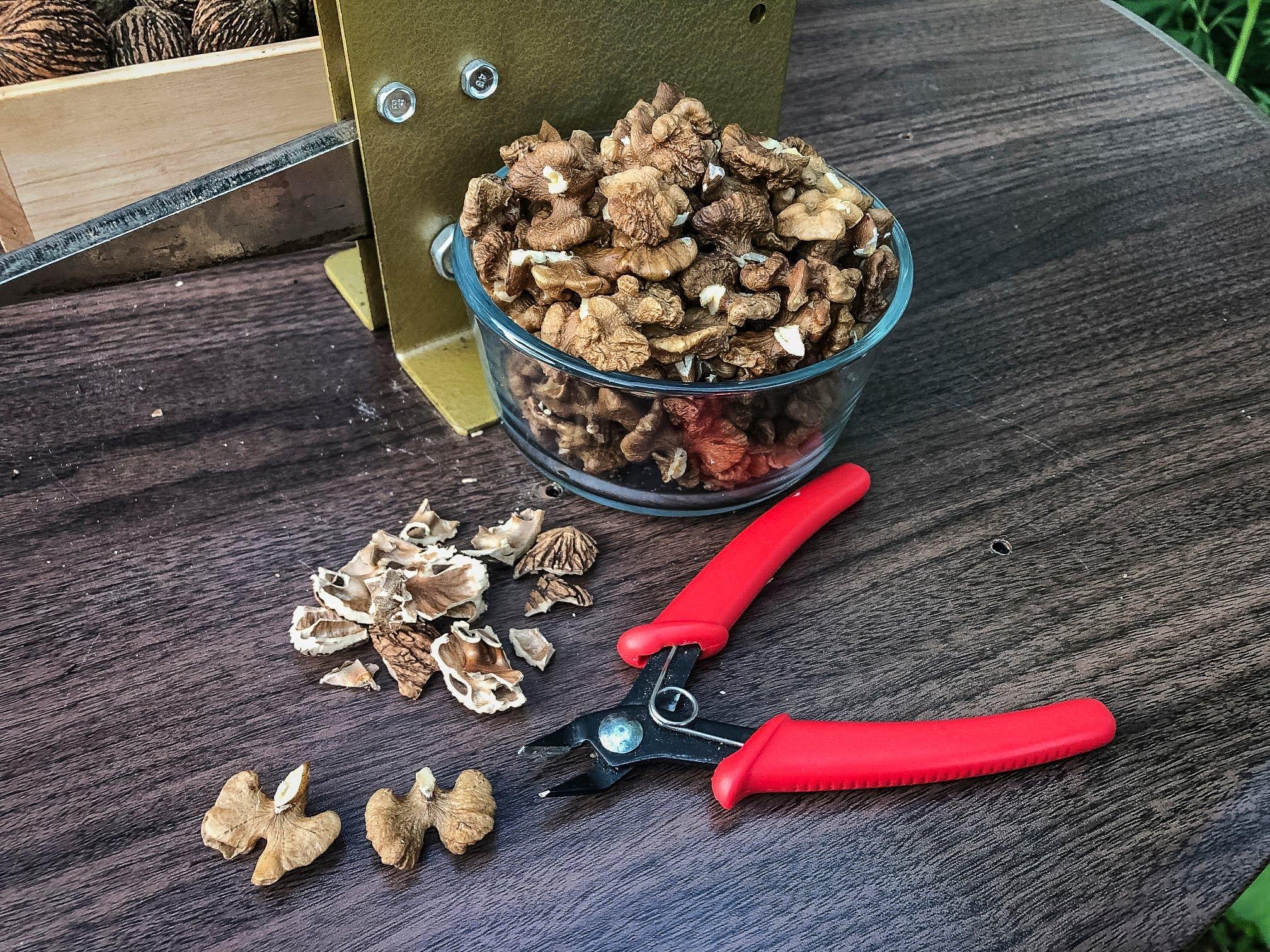
Without a nut cracker like the GGG, you can crack the nuts with a hammer and use wire cutting pliers to extract the meat.
If you just want to crack a few nuts for a snack or to see if you enjoy the flavor, Reich says that you should certainly try the hammer method or use a shop vise to break them open. Then use wire-cutting pliers to snip the broken pieces of shells to extract any stuck nut meat. But realize that you will mostly end up with small pieces of nut meat with the hammer or vise method, instead of entire sections you can achieve with a quality black walnut cracker.
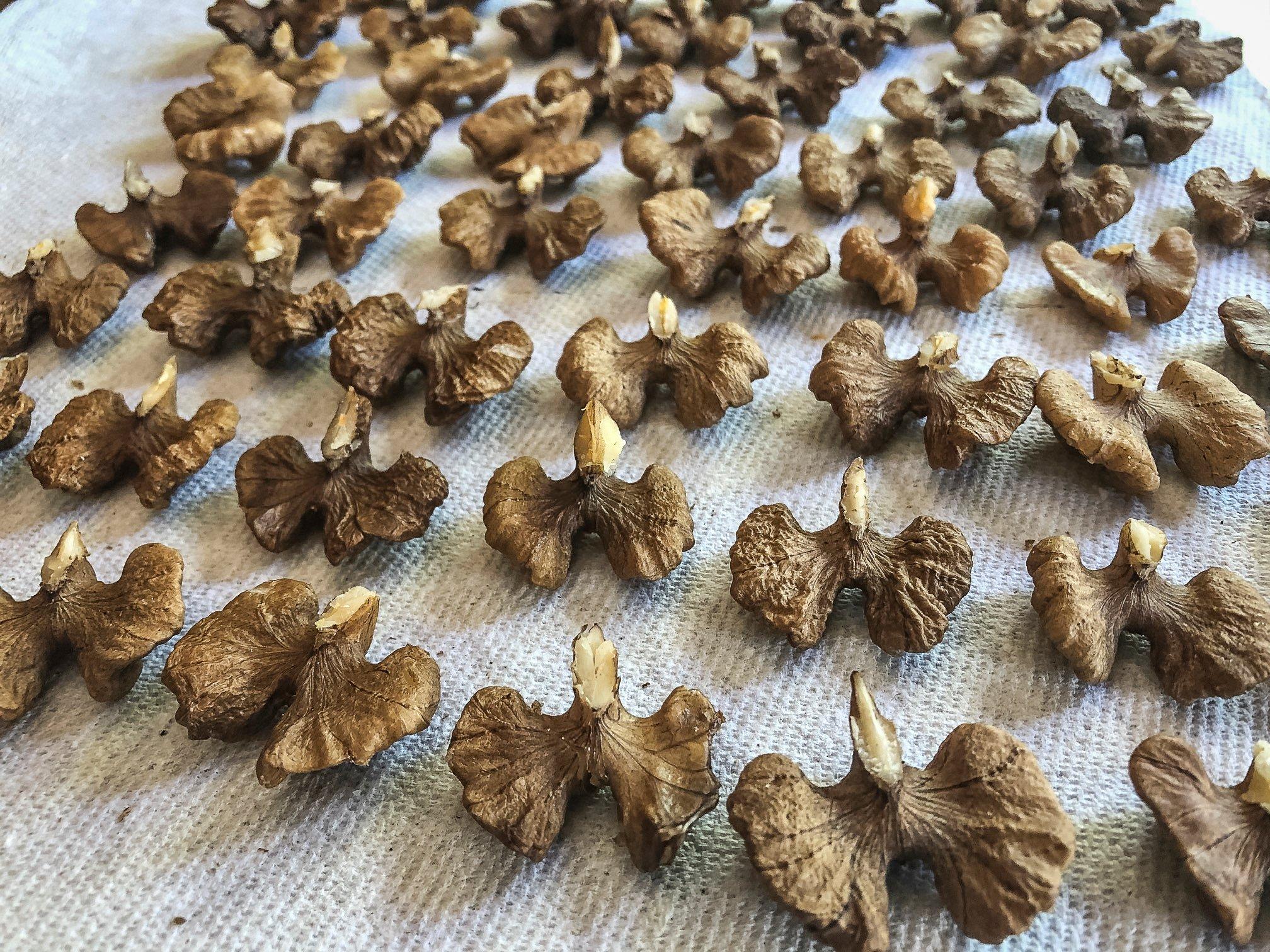
A quality nut cracker yields large pieces instead of smaller crumbles common with other extraction methods.
“Once people get serious about foraging for and eating black walnuts, they eventually end up investing in a robust cracker, and rightfully so,” Reich said. “Another good tip is to soak the nuts in water for 24 hours and then air-dry them to prep them for cracking. This softens the shells and makes everything easier.”
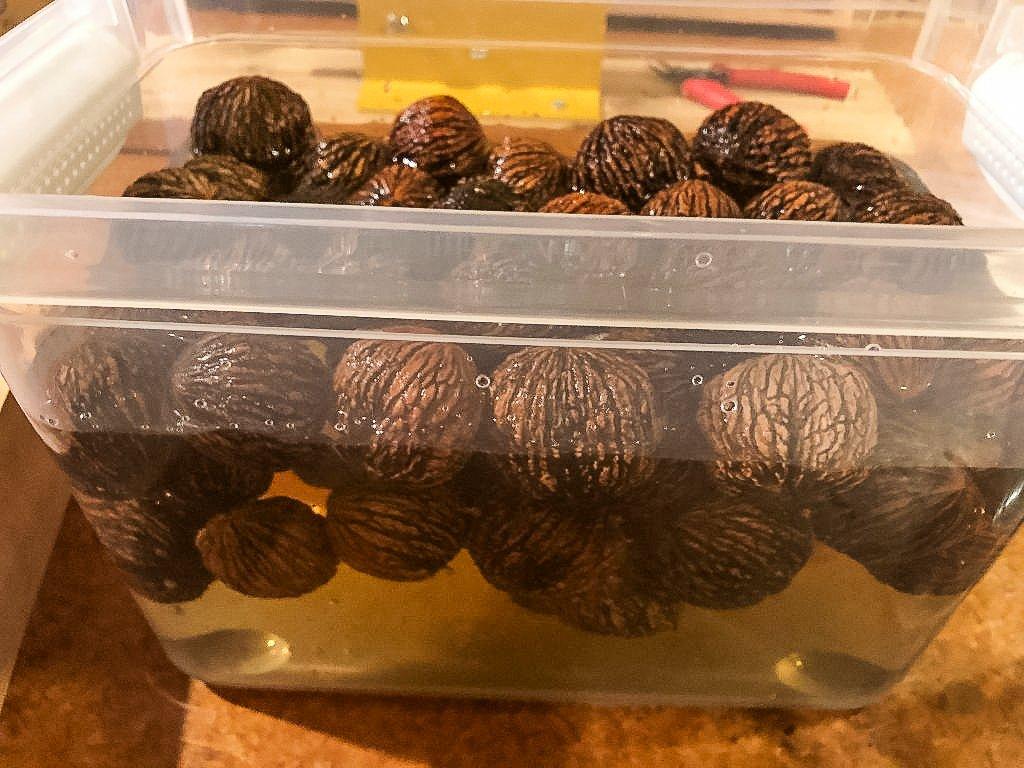
Soaking the nuts before cracking slightly softens the shell.
So what can you do with black walnuts once you have them cracked? The most common is to eat them just as they are, as a snack. They have a rich, nutty, almost fruity flavor that is more pronounced than other nut species. Reich likes to put the freshly cracked nuts into a dehydrator for several hours to crisp them up and make the flavor more pronounced for the nuts he intends for snacking. You can also cook with them. Over the coming weeks, we’ll be making some Christmas treats with black walnuts here at Timber2Table. We’ll be posting recipes as we do.
***Don’t Miss: *WHAT’S IN MY SNACKLEBOX?
Don’t have time to forage for black walnuts yourself this year, or maybe you’ve missed the prime time to harvest them? Don’t worry. Hammon’s Black Walnuts located in Stockton, Missouri, has been buying wild black walnuts from foragers all over the southeastern U.S. for over 70 years now. They process the walnuts, do the hard work of shelling them, then bag and sell the delicious walnut meat by mail order or in stores nationwide. If you don’t have the time, place or equipment to forage your own this year, just pick up a bag or two from Hammon’s. They are still wild, foraged nuts, only without the hassle and work. We’ll be using a combination of their walnuts, along with some we’ve foraged, for our upcoming recipes.













